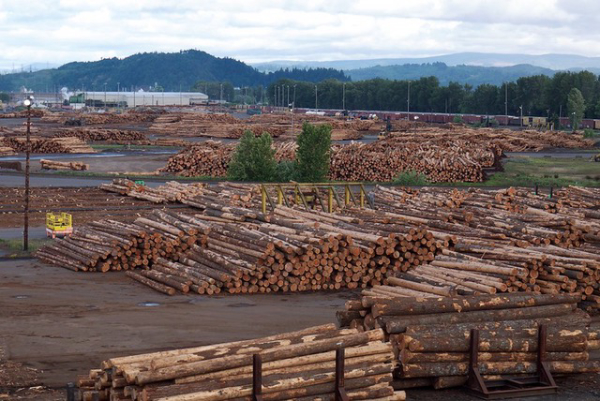How the Pandemic Drove Up the Cost of Wood Products
Insight from the Forest Service answering the question “what caused last year’s crazy increase in lumber prices?”

May 16, 2022 – During the first year of the COVID-19 pandemic, prices of processed wood products, such as softwood lumber and plywood, nearly quadrupled. Wholesale prices for plywood increased from $400 to $1500 per thousand square feet (roughly equivalent to retail prices of plywood increasing from about $12.80 to $48.00 per sheet).
Forest Service Senior Research Forester and Project Leader Jeffrey Prestemon studies the market factors behind increased prices in these important consumer products.
“As researchers, we investigate the reasons for a problem, quantify its impacts and look into solutions,” says Prestemon. “The knowledge we develop in the Forest Service can lead to more mutually beneficial solutions and decision-making in both government and the private industry.”

The pandemic triggered a worker shortage in many sectors, including the forest products industry, which led tolimited availability of wood products, such as softwood lumber and structural panels (softwood plywood and oriented strand board). The domino effect continued with supply chains further disrupted by a lack of truckers to move materials. At the end of the line were those of us who were homebound under travel restrictions, wanting to spend more money on home improvements.
“Mills wanted to increase output, but they couldn’t find workers,” says Jeff Prestemon. “This is basic economics: when the supply curve shifts backwards and demand increases, prices will go up.”
Another outcome of worker absences and departures was an increase in average industry wages. Higher pay, however, did not result in enough extra workers to make up for increased demand and limited supply. High-level skills are increasingly needed to work with advanced machines in wood processing facilities.
“Because work in the wood products industry is becoming more mechanized, the workforce now needs to be more technically competent and highly trained,” says Prestemon. “It takes time to develop these skills, so ramping up production in a short period of time is not as easy as it was in the past.”
Overall, the supply of wood from Canada and other countries was not enough to lower U.S. prices. Canada, historically the primary source of wood imports to the U.S., increased shipments of wood products to the U.S. during 2020 and 2021. However, imports were slow to arrive due to shipping constraints.
Other factors also limited supply from Canada. Some Canadian provinces’ annual allowable cuts were lowered because of a Mountain Pine Beetle epidemic, which has attacked half the total volume of commercial lodgepole pine since the 1990s. The effects of U.S. tariffs on Canadian softwood lumber are not fully known, but they could have further constrained wood imports during the pandemic.
Prestemon emphasized that supply and demand for products determine the price of commodities.
“Together, increasing pay for employees and increasing the number of technically competent employees will help increase production and drive prices down,” he says. “Expanded mill capacities, perhaps through higher foreign direct investment in U.S. production, may contribute to a supply chain solution as well.”
Ultimately, consumers demand wood products for house construction, renovation projects and other uses. High prices discourage consumption. But right now, with apparent profits to be made in wood product manufacturing, the industry may respond to those incentives.
McDaniel is with the Southern Research Station, USDA Forest Service






